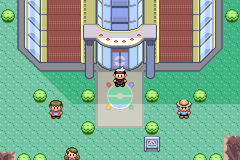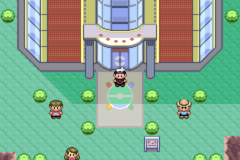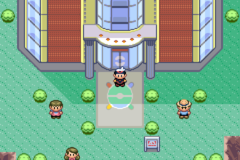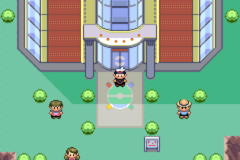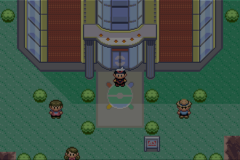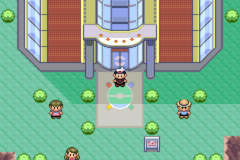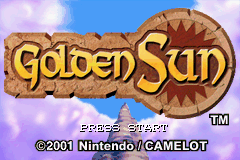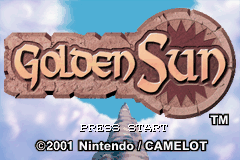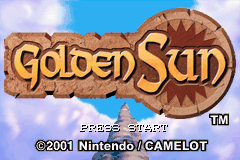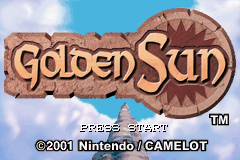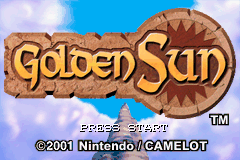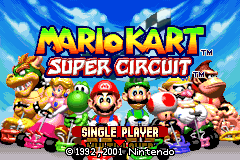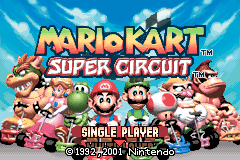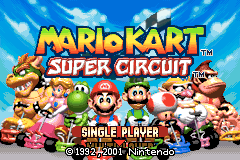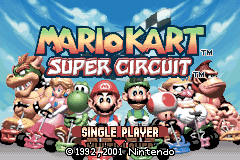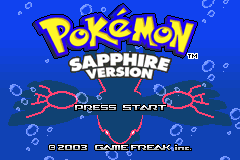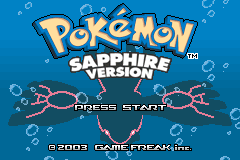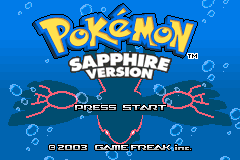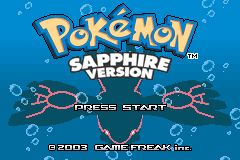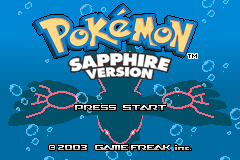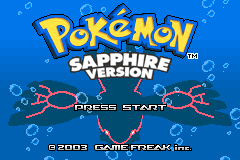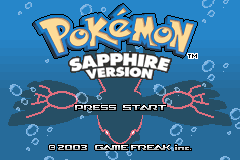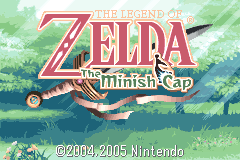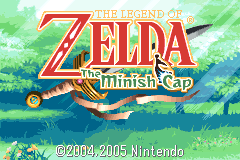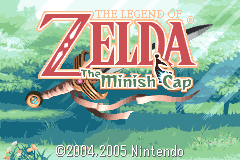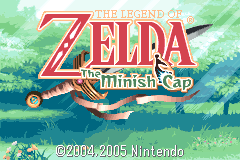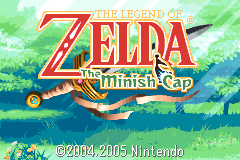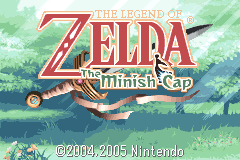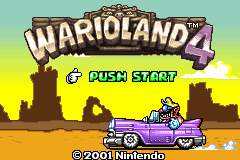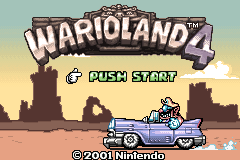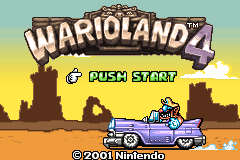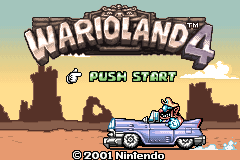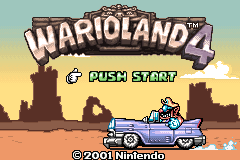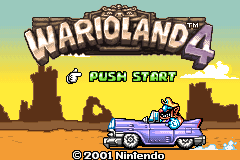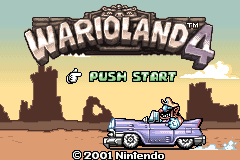Game Boy Interface/Standard Edition
| Information | |
|---|---|
| Author(s) | Extrems |
| Type | Utility |
| Version | Rolling release |
| Licence | All rights reserved |
| Links | |
|
Download main package Download extra package | |
| Website | |
| Discussion | |
| Source | |
| This software must not be sold, neither alone nor as part of a bundle. If you paid for this software or received it as part of a bundle following payment, you have been scammed and should demand your money back immediately. |
| Firmware update notice for GCVideo products. It is strongly recommended to update to GCVideo-DVI v3.0 or later before using this software. GCVideo Lite products are not recommended under any circumstances. |
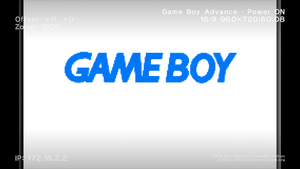
The author's original vision, Game Boy Interface Standard Edition (GBI) features an advanced video renderer exercising the GameCube hardware to its fullest. A port of mGBA for GameCube and Wii, dubbed Enhanced mGBA, is based upon it.
Controls
On-screen display
| Nintendo GameCube | Nintendo GameCube Controller | Logitech Speed Force | Nintendo 64 Controller [1] | Action |
|---|---|---|---|---|
| A/B Buttons or Z and Start/Pause Buttons | A/B Buttons or Z and Start/Pause Buttons | A/B Buttons or Z and Start Buttons | Hide on-screen display | |
| X Button or C Stick Left | X Button | C Button Left | Toggle on-screen display | |
| Y Button [2] | Y Button | Revert offset/zoom | ||
| Z Button | Z Button | Z Button | Take screenshot | |
| Start/Pause (Hold for 1 second) |
Start/Pause (Hold for 1 second) |
Start (Hold for 1 second) |
Exit | |
| +Control Pad | +Control Pad | +Control Pad | Offset | |
| L/R Buttons | L/R Buttons | L/R Buttons | Zoom | |
| Reset Button | X, Y and Start/Pause Buttons (Hold for 1.5 seconds) |
L, R and Start Buttons | Recalibrate controller | |
| Reset Button | Save movie |
In-game
| Nintendo GameCube | Nintendo GameCube Controller | Logitech Speed Force | Nintendo 64 Controller [1] | Action |
|---|---|---|---|---|
| A/B Buttons | A/B Buttons or Accelerator/Brake Pedals | A/B Buttons | A/B Buttons | |
| X Button or C Stick Left | X Button | C Button Left | Toggle on-screen display | |
| Y Button [2] | Y Button | Turbo | ||
| Z Button | Z Button | Z Button | Select | |
| Start/Pause | Start/Pause | Start | Start | |
| +Control Pad or Control Stick | +Control Pad or Steering Wheel | +Control Pad or Control Stick | +Control Pad | |
| L/R Buttons | L/R Buttons | L/R Buttons | L/R Buttons (Only for Game Boy Advance) | |
| Reset Button | B, X and Start/Pause Buttons | B, X and Start/Pause Buttons | Z, R, A, B and Start Buttons | Power Switch |
| Reset Button | X, Y and Start/Pause Buttons (Hold for 1.5 seconds) |
L, R and Start Buttons | Recalibrate controller | |
| Z and Start/Pause Buttons | Z and Start/Pause Buttons | Z and Start Buttons | Multi-play boot (Only in Game Boy Advance BIOS) |
| DK Bongos Controller | Active Life Mat Controller | Action |
|---|---|---|
| Bottom Right/Left | Orange Up/Right | A/B Buttons |
| Hand Clap | - Button | Select |
| Start/Pause | + Button | Start |
| Top Right | Blue or Orange Square | +Control Pad Right |
| Top Left | Blue Left | +Control Pad Left |
| Blue Up | +Control Pad Up | |
| Blue or Orange Down | +Control Pad Down |
Options
--aspect=<w:h>- Specify screen aspect ratio. The default is the Progressive Scan Mode system setting (4:3 or 16:9).
--offset=<x:y>- Set offset. The default is the Screen Position system setting (-32 to +32).
--zoom=<x:y>- Set zoom. The default is the Game Boy Player Start-up Disc's Screen Size setting (2.0 or 2.375).
--rotate=<0-359>- Set rotation (default: 0).
--poll=<0-11>- Set controller polling rate. Use if your third-party controller or controller adapter is malfunctioning.
0: VSync (most compatible) 1: 1000Hz (default) 2: 500Hz 3: 350Hz 4: 300Hz 5: 250Hz 6: 200Hz 7: 150Hz 8: 150Hz 9: 125Hz 10: 125Hz 11: 100Hz
--turbo=<on:off>- Set autofire interval (default: 3).
--movie=<path>,--no-movie- Play input log (default: no).
--movie-record,--no-movie-record- Record input log (default: no).
--overlay=<path>,--no-overlay- Load texture palette (default: frame.tpl.gz).
--overlay-id=<ID>- Set texture palette index. The default is the Game Boy Player Start-up Disc's Frame setting (0 to 19).
--overlay-scale=<x:y>- Set texture scale (default: auto).
--filter=<[none|blend|deflicker|accumulate|scale2x[ex|plus]|eagle2x|scan2x|normal2x][,prescale|no-prescale]>- Set image doubling or screen filter. The default is the Game Boy Player Start-up Disc's Screen Filter setting (none, blend, deflicker).
none- Also known as the Sharp screen filter.
blend[=<red[:green[:blue]]>]- Blend frames n and n-1 (default: 0.55).
- Also known as the Soft screen filter.
deflicker[=<red[:green[:blue]]>]- Blend frames n and n-1 where n and n-2 are equal (default: 0.55).
- Also known as the Normal screen filter.
accumulate[=<red[:green[:blue]]>]- Blend frames with accumulation buffer (default: 0.55).
- As used by the Nintendo 3DS Ambassador games.
scale2x- Apply EPX/Scale2×/AdvMAME2× algorithm.
eagle2x- Apply Eagle algorithm.
prescale,no-prescale- Enable prescaling filter (default: no).
- Note: Any chosen filter will also apply to screenshots, but not to video streaming.
--dither=<none|threshold|bayer8x8|bayer4x4|bayer2x2|cluster8x8|cluster4x4>- Set dithering algorithm (default: threshold).
- Applied during prescaling and temporal interpolation.
--scaler=<nearest|bilinear|area|box>- Set image scaling filter (default: area).
--matrix=<identity|gba|gbi|nds|palm|psp|vba>- Set color matrix (default: gbi).
- This translates the RGB color primaries to the standard RGB color space.
identity: Identity matrix gba: Game Boy Advance (by Pokefan531) gbi: Game Boy Interface nds: Nintendo DS (by Pokefan531) palm: Palm Treo 700p (by Pokefan531) psp: PlayStation Portable (by Pokefan531) vba: VisualBoyAdvance-M (by Pokefan531)
--input-gamma=<red[:green[:blue]]>- Set gamma (default: 2.2).
--output-gamma=<1.0|1.7|2.2>- Specify screen gamma (default: 2.2).
--contrast=<red[:green[:blue]]>- Set gain (default: 1.0).
--brightness=<red[:green[:blue]]>- Set lift (default: 0.0).
--volume=<left[:right]>- Set audio gain (default: 0.75).
- Note: GCVideo-DVI v2.4b and earlier reduces volume down to a quarter.
--sound=<[mono|stereo][,digital|analog]>- Set sound mode. The default is the Sound Mode system setting (mono or stereo).
digital- Use PWM decoder.
analog[=<a0:a1:a2:b1:b2>]- Use 2MHz biquad filter (default). Defaults to a second-order low-pass filter with a cut-off of 10kHz and a quality factor of √2 if not specified.
- This is used to simulate the RLC circuit on the Game Boy Advance's Headphone Jack, providing a treble boost.
--format=<ntsc|pal|pal-m|ntsc-50|pal-60|custom|custom-m|hd60|hd50|hd48|hdcustom>- Set video format. The default is the Video Mode and 60Hz Mode system setting (ntsc, pal or pal-60, pal-m).
- Note: GCVideo-DVI is only designed to support NTSC, PAL and PAL-60.
--scan-mode=<[interlace|quasi-interlace|non-interlace|non-progressive|progressive][,clock2x|no-clock2x][,size2x|no-size2x]>- Set scan mode. The default is the Progressive Scan Mode system setting (interlace or progressive).
interlace: 15 or 18-22kHz interlaced, deflickering quasi-interlace: 15 or 18-22kHz segmented frame non-interlace: 15 or 18-22kHz progressive non-progressive: 31 or 27-33kHz interlaced, field rendering progressive: 31 or 27-33kHz progressive
clock2x,no-clock2x- Enable 27MHz pixel clock (default: auto). Enabling doubles the refresh rate for
interlacescan modes. Disabling halves the refresh rate forprogressivescan modes. - This depend on a compatible video encoder or transmitter not mangling its input.
size2x,no-size2x- Enable 2× video oversampling (default: auto). Enabling halves the refresh rate.
- If the video format's horizontal resolution is less or equal to 682, the internal resolution is doubled instead.
- This depend on a compatible video encoder or transmitter not mangling its input.
--osd,--no-osd- Show on-screen display (default: yes).
--ipv4-address=<aaa.bbb.ccc.ddd>- Set static IPv4 address.
--ipv4-gateway=<aaa.bbb.ccc.ddd>- Set static IPv4 gateway.
--ipv4-netmask=<aaa.bbb.ccc.ddd>- Set static IPv4 netmask.
--network,--no-network- Enable Broadband Adapter features (default: yes).
--stream[=<aaa.bbb.ccc.ddd>],--no-stream- Stream video to IP address on UDP port 1234 (default: no). Defaults to 255.255.255.255 if not specified.
--enhance,--no-enhance- Enable Game Boy Player enhancements (default: yes).
Title Feature(s) Drill Dozer Rumble Game Boy Advance Video Series Not compatible Mario & Luigi: Superstar Saga Rumble, reduced contrast Pokémon Pinball: Ruby & Sapphire Rumble Shikakui Atama o Maru Kusuru Advance: Kanji Keisanhen Rumble, restored contrast Shikakui Atama o Maru Kusuru Advance: Kokugo Sansuu Shakai Rikahen Rumble, restored contrast Super Mario Advance 4: Super Mario Bros. 3 Rumble, restored gamma
- Note: Remove any accessory from the External Extension Connector, or the Rumble Feature will not work.
- Note: If you're using an EverDrive-GBA, make sure to turn off Quick Boot in the options, or the enhancements may not work.
<path>- Load Game Boy Advance multi-bootable ROM.
- Note: Remove any accessory from the External Extension Connector. Hold Start + Select in the Game Boy Player while the Game Boy logo is visible.
Any file path can be relative or absolute. If relative, it is relative to /GBI. They can also explicitly specify the SD card to read from by prefixing an absolute path with carda: or cardb:
Comparisons
Video quality (480i/p)
These results are applicable to Nintendo GameCube software.
Using DSSIM 2.9.7 and FFmpeg 4.2 for RGB SSIM & PSNR, with this reference image.
The analog-to-digital conversion parameters were calibrated for each source and device pair.
This isn't representative of relative signal strength. Sorting by DSSIM provide a fairly accurate ranking.
Blackmagic Intensity Shuttle
This 10-bit YCBCR 4:2:2 capture device is most representative of what you might see on a digital television.
As chroma is shifted right on YPBPR in/out, this was corrected in post-processing. Video and S-Video in/out suffer from internal interference.
-
Nintendo Stereo AV Cable (NTSC-J)
-
Nintendo Stereo AV Cable (PAL-M)
-
Generic S-Video Cable (NTSC-J) [1]
-
Generic S-Video Cable (PAL-M) [1]
-
HD Retrovision SNES Component Cable
-
EON GCHD Mk-II + Datel Wii HD Component Cable
-
EON GCHD Mk-II + HD Retrovision Wii Component Cable
-
EON GCHD Mk-II v2.4c.2 + Datel Wii HD Component Cable
-
EON GCHD Mk-II v2.4c.2 + HD Retrovision Wii Component Cable
-
Nintendo GameCube Component Video Cable
-
GCVideo-DVI v2.4b and later [2]
-
Insurrection Industries CARBY v2.4d-2 [2]
-
GCVideo-DVI v3.0 and later
Datapath VisionRGB
Using AD9887A.
This range of 8-bit RGB 4:4:4 capture cards serve as our reference.
-
HD Retrovision SNES Component Cable
-
Nintendo GameCube Component Video Cable + [RetroRGB Comp2DVI v2.1]
-
GCVideo-DVI v2.4b and later [1]
-
Insurrection Industries CARBY v2.4d-2 [1]
-
GCVideo-DVI v3.0 and later
Video quality (1080i)
These results are applicable to Nintendo GameCube software.
Using DSSIM 2.9.7 and FFmpeg 4.2 for RGB SSIM & PSNR, with this reference image.
The analog-to-digital conversion parameters were calibrated for each source and device pair.
This isn't representative of relative signal strength. Sorting by DSSIM provide a fairly accurate ranking.
Blackmagic Intensity Shuttle
Using ADV7604.
This 10-bit YCBCR 4:2:2 capture device is most representative of what you might see on a digital television.
As chroma is shifted right on YPBPR in/out, this was corrected in post-processing.
-
Nintendo GameCube Component Video Cable + [RetroRGB Comp2DVI v2.1]
| Source | Lab DSSIM | RGB SSIM | RGB PSNR |
|---|---|---|---|
| EON GCHD Mk-II + Datel Wii HD Component Cable | -15.617843 | 10.221003 | 28.309715 |
| EON GCHD Mk-II + HD Retrovision Wii Component Cable | -15.686934 | 9.509686 | 28.350319 |
| EON GCHD Mk-II v2.4c.2 + Datel Wii HD Component Cable | -19.750612 | 10.950729 | 31.618949 |
| EON GCHD Mk-II v2.4c.2 + HD Retrovision Wii Component Cable | -19.823434 | 9.752755 | 31.986043 |
| EON GCHD Mk-II v2.4c.2 + Datel Wii HD Component Cable + RetroRGB Comp2DVI v2.1 | -20.296390 | 11.988850 | 31.527673 |
| EON GCHD Mk-II v2.4c.2 + HD Retrovision Wii Component Cable + RetroRGB Comp2DVI v2.1 | -20.475047 | 12.069872 | 31.842823 |
| Nintendo GameCube Component Video Cable | -20.170760 | 12.471915 | 31.572464 |
| Nintendo GameCube Component Video Cable + RetroRGB Comp2DVI v2.1 | -20.248112 | 12.441875 | 31.544060 |
Datapath VisionRGB
Using AD9887A.
This range of 8-bit RGB 4:4:4 capture cards serve as our reference.
-
Nintendo GameCube Component Video Cable + [RetroRGB Comp2DVI v2.1]
- ↑ 1.0 1.1 1.2 1.3 EON GCHD Mk-II's analog output lacks a reconstruction filter.
- ↑ 2.0 2.1 2.2 2.3 GCVideo-DVI v2.4c and earlier has CB shifted right and CR shifted left.
- ↑ 3.0 3.1 3.2 3.3 GCVideo-DVI v2.4d-2 and earlier prevents use of the full active area.
- ↑ GCVideo-DVI v2.4a and earlier has CB shifted left in the Green channel of RGB outputs.
Sound emulation
Mega Man Zero 2
Pokémon Sapphire
Image doubling
Pokémon Sapphire
-
None
-
Scale2×Ex
-
Scale2×Plus
-
Scale2×
-
Eagle2×
-
Scan2×
-
Normal2×
Color matrix
Golden Sun
-
Identity matrix
-
Game Boy Advance
-
Game Boy Interface
-
Nintendo DS
-
Palm Treo 700p
-
PlayStation Portable
-
VisualBoyAdvance-M
Mario Kart: Super Circuit
-
Identity matrix
-
Game Boy Advance
-
Game Boy Interface
-
Nintendo DS
-
Palm Treo 700p
-
PlayStation Portable
-
VisualBoyAdvance-M
Pokémon Sapphire
-
Identity matrix
-
Game Boy Advance
-
Game Boy Interface
-
Nintendo DS
-
Palm Treo 700p
-
PlayStation Portable
-
VisualBoyAdvance-M
The Legend of Zelda: The Minish Cap
-
Identity matrix
-
Game Boy Advance
-
Game Boy Interface
-
Nintendo DS
-
Palm Treo 700p
-
PlayStation Portable
-
VisualBoyAdvance-M
Wario Land 4
-
Identity matrix
-
Game Boy Advance
-
Game Boy Interface
-
Nintendo DS
-
Palm Treo 700p
-
PlayStation Portable
-
VisualBoyAdvance-M
Examples
Color emulation
Game Boy Advance

Using a contrast ratio of 250:1.
--matrix=gba --input-gamma=4. --contrast=.74851331406341291833644689906823 --brightness=.25148668593658708166355310093177
Nintendo DS
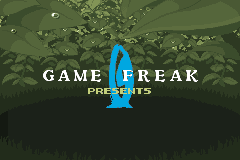
Using a contrast ratio of 600:1.
--matrix=nds --input-gamma=2.2 --contrast=.94539857500845076575010909270066 --brightness=.05460142499154923424989090729934
Palm Treo 700p
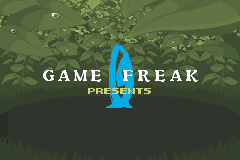
Using a contrast ratio of 75:1.
--matrix=palm --input-gamma=2.2 --contrast=.85949252616415732890698972119636 --brightness=.14050747383584267109301027880364
PlayStation Portable
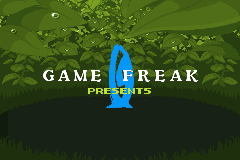
Using a contrast ratio of 750:1.
--matrix=psp --input-gamma=2.2 --contrast=.95066513192721403818280764386444 --brightness=.04933486807278596181719235613556
Color restoration
Mario & Luigi: Superstar Saga
This game reduces contrast when played with Game Boy Player enhancements.
--contrast=1.1
Super Mario Bros. 3: Super Mario Advance 4
This game reduces gamma when played without Game Boy Player enhancements.
--input-gamma=2.8
The Legend of Zelda: Oracle of Ages/Seasons
This game reduces gamma when played on a Game Boy Advance. Due to Game Boy Color limitations, only shadows can be restored perfectly.
--input-gamma=4.
Mimicking
Game Boy Player Start-up Disc
Included as gbi.cli.example.
Transcribed below for reference.
--aspect=4:3 --overlay=frame-srgb.tpl.gz --dither=none --matrix=identity --input-gamma=1. --output-gamma=1. --contrast=.78125 --sound=analog=.000148021979839541018009185791015625:.00029604395967908203601837158203125:.000148021979839541018009185791015625:-1.965293407440185546875:.965885460376739501953125 --no-osd
Wii U Virtual Console
--aspect=16:9 --zoom=3 --no-overlay --filter=none --dither=none --matrix=identity --input-gamma=1. --output-gamma=1. --contrast=.75 --sound=digital --no-osd --no-enhance
Video optimization
Datapath VisionAV & VisionRGB
GCVideo-DVI v3.0 and later
These settings provide a 2× scaled image in a 4:3 960×360p60 video output.
In the GCVideo menu under "Other settings", set "Enhanced DVI mode" to On.
In the GCVideo menu under "Advanced settings", set "Chroma Interpolation" to On, "Fix resolution" to Off, and "Digital color format" to YC444.
--aspect=4:3 --offset=0 --zoom=3 --filter=prescale --dither=bayer2x2 --scaler=nearest --format=hd60 --scan-mode=non-interlace,clock2x,size2x
- Color Adjustments
- Brightness: 32
- Contrast: 128
- Colour Domain: YUV (601) Limited
Datapath VisionRGB
Nintendo GameCube Component Video Cable
These settings provide a 2× scaled image in a 4:3 360p60 video output.
--aspect=4:3 --offset=0 --zoom=3 --filter=prescale --dither=bayer2x2 --scaler=nearest --format=hd60 --scan-mode=non-interlace,clock2x,size2x
- Resolution and Refresh
- Width: 960
- Height: 360
- Vertical Refresh: 60.00
- Video Adjustments
- Horizontal Position: 205
- Horizontal Size: 1200
- Phase: 31
- Vertical Position: 13
- Black Level: 8
- Cropping
- Top: 20
- Left: 0
- Width: 960
- Height: 320
- Color Adjustments
- Brightness: 32
- Contrast: 128
- Colour Domain: YUV (601)
- Colour Balance
- All Colors
- Brightness: 32
- Contrast: 128
- Red
- Brightness: 159
- Contrast: 159
- Green
- Brightness: 178
- Contrast: 160
- Blue
- Brightness: 152
- Contrast: 144
- All Colors
Open Source Scan Converter
These settings provide a 2× scaled image in a 4:3 360p60 video output.
--aspect=4:3 --offset=0 --zoom=3 --format=hd60 --scan-mode=non-interlace
High-definition televisions
Nintendo GameCube Component Video Cable
These settings provide a 2.75× scaled image, line doubled in a 16:9 1080i60 video output.
--aspect=11:6 --offset=0 --zoom=2.75 --format=hd60 --scan-mode=non-progressive
Change the Aspect Ratio on the television to Just Scan.
GCVideo-DVI v2.4d and earlier
These settings provide a 3× scaled image, line doubled in a 16:9 720x960i59.9972 video output.
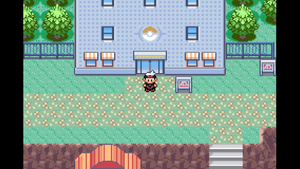
--aspect=16:9 --offset=+4:-2 --zoom=3 --format=ntsc --scan-mode=non-progressive
Change the Aspect Ratio on the television to 16:9.
To improve the picture further, in the GCVideo menu under "Other settings", try setting "Enhanced DVI mode" to Off. You will lose embedded digital audio.
Labeling the input on the television as a PC may also work.
These settings provide a 2.875× scaled image in a 16:9 720×480p59.94 video output.
--aspect=16:9 --offset=+4 --zoom=2.875 --format=ntsc --scan-mode=progressive
Change the Aspect Ratio on the television to 16:9.
GCVideo-DVI v3.0 and later
These settings provide a 4× scaled image in a 16:9 960×720i60.08 video output.
In the GCVideo menu under "Other settings", set "Enhanced DVI mode" to On.
In the GCVideo menu under "Advanced settings", set "Digital color format" to YC422.
Included as gbi-gcdv-v3.cli, gbi-gcdv-v3.dol+cli and gbi-gcdv-v3.gci.
Transcribed below for reference.
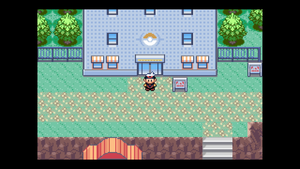
--aspect=16:9 --offset=0 --zoom=3 --format=hd60 --scan-mode=interlace,clock2x,size2x
Change the Aspect Ratio on the television to 16:9. If the output isn't compatible, use the default settings.
These settings provide a 4× scaled image in a 4:3 960×720i60.08 video output.
In the GCVideo menu under "Other settings", set "Enhanced DVI mode" to On.
In the GCVideo menu under "Advanced settings", set "Digital color format" to YC422.
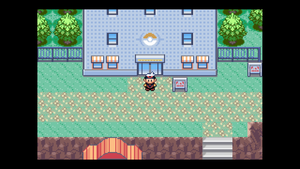
--aspect=4:3 --offset=0 --zoom=3 --format=hd60 --scan-mode=interlace,clock2x,size2x
Change the Aspect Ratio on the television to 4:3. If the correct aspect ratio cannot be realized, or the output isn't compatible, consider other options.
These settings provide a 3× scaled image in a 4:3 720×540p59.9467 video output. Due to the tight video timings, digital audio cannot be embedded.
In the GCVideo menu under "Other settings", set "Enhanced DVI mode" to Off.
In the GCVideo menu under "Advanced settings", set "Chroma Interpolation" to On.
--aspect=4:3 --offset=0 --zoom=3 --filter=prescale --dither=bayer2x2 --scaler=nearest --format=hd60 --scan-mode=progressive
Change the Aspect Ratio on the television to 4:3. If the correct aspect ratio cannot be realized, or the output isn't compatible, consider other options.
Video capture devices (Game Boy Advance)
These settings provide a 3× scaled image in a 3:2 480i59.94 or 480p59.94 video output.
--aspect=3:2 --offset=0 --zoom=3 --filter=prescale --dither=bayer2x2 --scaler=nearest --format=ntsc
Video capture devices (Game Boy Color)
These settings provide a 4× scaled image in a 5:4 576i50 or 576p50 video output.
--aspect=5:4 --offset=0 --zoom=4 --filter=prescale --dither=bayer2x2 --scaler=nearest --format=pal
FAQs
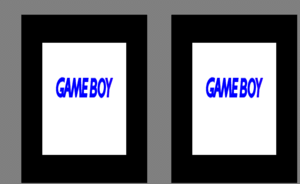
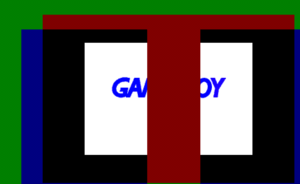
Red + Green: Regenerated blanking interval
Green + Blue: Actual blanking interval
How do I change Game Paks?
- Hold the Reset Button.
- Slide the Game Pak Ejector.
- Insert a Game Pak into the Game Pak Slot.
- Release the Reset Button.
Can I play Game Boy Advance Video?
Yes. You can do so by disabling Game Boy Player enhancements (--no-enhance, or "Rumble: No" in Swiss), or holding a direction in the Game Boy Player while the Game Boy Player logo is visible.
Is this an emulator? Can I play ROMs?
No, but there's Enhanced mGBA if you're looking for one.
Is it possible to dump Game Boy Game Paks?
No, the pin assignment for the ARM7 CPU is different and prevents any such possibility. Using the SM83 CPU is impractical.
If you're interested in backing up Game Boy Camera photos, you can do so by taking a screenshot.
Why am I seeing a double split image?
Either progressive scan mode is enabled or, if using GCVideo-DVI, line doubling is by default.
If line doubling is at fault, the picture may also be scrolling with a slant.
Why is my picture cut or off-center?
This is GCVideo-DVI's blanking regeneration misbehaving with unsupported video modes. In most cases, no user action is necessary with GCVideo-DVI v3.0 and later.
If you have a GCDual or EON GCHD Mk-II, under "Other settings", set "Analog output" (Wii RGB Cable) or "Mode Select" (Wii Component Cable) to dYUV.
For standard video modes, you can disable video oversampling (--scan-mode=no-clock2x,no-size2x, or "Video Oversampling: No" in Swiss).
Why is my picture square or narrow?
By default, Game Boy Interface assume a widescreen aspect ratio when using progressive scan.
Ensure that the television's settings match the assumed aspect ratio written in the top right corner of the on-screen display.
Why is there motion blur? Can I turn it off?
It removes stuttering caused by mismatches between the Game Boy Advance and the display refresh rate. It cannot be turned off.
It can be reduced by using a 120Hz video mode, but it's most effective on a sample-and-hold display.
This can possibly be confused with the deflickering filters. These can be disabled (--filter=none, or "Filter: Sharp" in Swiss).
Why are the colors washed out?
The screens used in the Game Boy family produced a smaller gamut of colors than found in the standard RGB color space on contemporary monitors.
Developers compensated for this to varying degree, resulting in odd-looking oversaturated colors when shown as-is.
By default, Game Boy Interface adapt these colors for the standard RGB color space, but only halfway as a compromise.
What happens when I exit Game Boy Interface?
The Game Boy Player keeps running and you're returned to autoexec.dol, or the Nintendo GameCube Main Menu.
If using Swiss v0.5r979 or later, its reload stub is called.
Changelog
January, 2021
- Added GBA ROM checksummer.
- Added all devices search for GBI directory.
- Updated GBA-as-GC controller.
- Improved GBA multiboot support.
December, 2020
- Added return to loader support.
- Updated color matrices by Pokefan531.
- Improved system stability.
- Improved SD card compatibility.
- Changed default video format to avoid PAL-M with digital AV.
May–June, 2020
- Added disc spin-down.
- Added GC Loader read-only support.
- Fixed wiiload over 100 Mbps full duplex.
April, 2020
- Fixed Game Boy Player settings validation.
January–March, 2020
- Improved SD card compatibility.
- Fixed wiiload arguments bug.
- Disabled deflickering for HD video modes.
October, 2019
- Added N64 Controller support.
- Added GBA anti-sleep mode.
- Added subfolder search for GBI directory.
- Conformed screenshots to DCF standard.
August–September, 2019
- Added Game Boy Player settings validation.
- Fixed default SD card with bad program name.
July, 2019
- Added SD2SP2 support.
- Fixed hang with no SD card inserted.
- Fixed hang upon SD card reinsertion.
June, 2019
- Improved video rendering.
- Renamed oversample scaler to area.
- Changed default scaler to area.
- Fixed 540p and 1080i.
May, 2019
- Added blend, deflicker and accumulate filters.
- Added prescaling filter setting.
- Added reset combo.
April, 2019
- Unified screen space for HD video modes.
- Fixed some video rendering bugs.
- Fixed a power issue.
- Enabled USB Gecko standard output.
March, 2019
- Updated color matrices by Pokefan531.
- Replaced 720p with 540p.
- Fixed 960i and 1152i.
- Fixed NTSC 50 composite video.
October–December, 2018
- Added HD Custom video format.
- Fixed 360p RGBcvS sync issue.
August, 2018
- Updated color matrices by Pokefan531.
July, 2018
- Updated GBA-as-GC controller.
June, 2018
- Added analog sound emulation.
- Added Custom-M video format.
- Added Custom interlaced video modes.
- Changed default sound mode to analog.
- Changed brightness/contrast controls to match BT.1886.
- Fixed some audio bugs.
- Enabled progressive scan in more cases to prevent display issues.
May, 2018
- Added 360p, 720i, 720p and 1080i video modes.
- Changed scan mode semantics.
- Changed default aspect ratio for progressive scan to 16:9.
- Fixed Game Boy Player advertisement.
- Fixed rumble protocol handshake.
April, 2018
- Added movie recording/playback.
- Updated GBA-as-GC controller.
March, 2018
- Improved multiboot implementation.
- Improved Game Boy sound quality.
- Improved audio rendering.
- Reduced audio latency.
- Changed default color matrix to GBI's original.
- Fixed SD card compatibility.
- Fixed multiboot to rumble protocol transition.
February, 2018
- Added color matrix from Gambatte.
- Added mono sound mode.
- Fixed wiiload autoboot with tiny GBA multiboot ROMs.
- Disabled machine checks.
January, 2018
- Updated color matrices by Pokefan531.
- Improved Game Boy Player driver.
September, 2017
- Added overlay scale setting.
- Added Logitech Speed Force support.
- Added Active Life Mat support.
- Improved Game Boy Player driver.
- Changed wiiload server to accept oversized DOLs.
- Fixed one random kernel crash.
August, 2017
- Added DK Bongos support.
- Updated color matrices by Pokefan531.
- Improved Game Boy Player driver.
July, 2017
- Added CLI append support.
- Updated color matrices by Pokefan531.
- Updated GBA-as-GC controller.
April, 2017
- Added component video DAC oversampling.
- Added experimental 960i and 1152i video modes.
March, 2017
- Added temporal/spatial dithering.
- Added color matrices by Pokefan531.
- Added TPL overlay support to wiiload server.
- Changed default color matrix to Pokefan531's.
- Changed default gamma to 2.2.
- Optimized NormalNx filter.
February, 2017
- Added volume control.
- Added per-channel settings where possible.
- Changed volume to 75% to mitigate clipping.
- Fixed framebuffer clearing for 576i.
November, 2016
- Updated GBA-as-GC controller.
- Optimized Scale2xEx filter.
October, 2016
- Added Scale2xEx and Scale2xPlus filters.
- Added oversample and box scalers.
- Added basic video streaming.
- Added Remote RetroPad support.
- Optimized video rendering.
September, 2016
- Added polling rate setting.
May, 2016
- Updated GBA-as-GC controller.
- Improved Game Boy Player driver.
- Fixed WaveBird Controllers.
April, 2016
- Added GBA multiboot support to wiiload server.
- Added Xboo Communicator.
- Added BIOS/ROM dumper.
- Replaced GBA-as-controller with GBA-as-GC controller.
March, 2016
- Added GBA-as-controller support.
- Recognized a half press of the analog triggers.
December, 2015
- Expanded video options. Now includes 25, 30, 100 and 120 Hz modes.
- Added gamma-encoded borders for special use.
November, 2015
- Added (GZipped) TPL overlay support.
- Added all 20 borders from the Game Boy Player Start-up Disc.
October, 2015
- Added Scale2x, Eagle2x, Scan2x and Normal2x filters.
August, 2015
- Added executable compression.
- Added return to
autoexec.dol. - Added memory card distribution files.
- Added auto-cropping for Game Boy screenshots.
- Optimized video rendering.
- Reduced coil whine.
July, 2015
- Added rumble.
- Added hold to quit.
- Added screenshot saving.
- Added SNTP broadcast listener.
- Changed default video mode to interlaced.
- Fixed Game Boy Player detection.
May, 2015
- Changed all 60 Hz modes to have 486 active lines.
March, 2015
- Added digital PWM sound.
- Added turbo button.
- Fixed 288p.
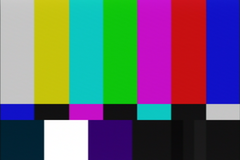
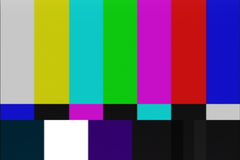
![Generic S-Video Cable (NTSC-J) [1]](/wiki/images/thumb/c/c3/GBI_ADV7180_S-Video_NTSC.png/240px-GBI_ADV7180_S-Video_NTSC.png)
![Generic S-Video Cable (PAL-M) [1]](/wiki/images/thumb/8/8f/GBI_ADV7180_S-Video_PAL-M.png/240px-GBI_ADV7180_S-Video_PAL-M.png)

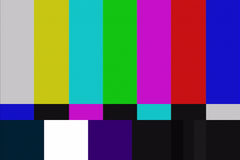
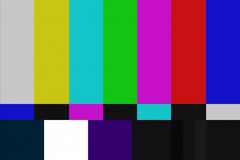
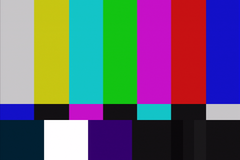
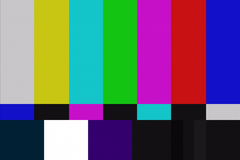

![GCVideo-DVI v2.4a and earlier [2][3]](/wiki/images/thumb/e/eb/GBI_ADV7604_GCHD.png/240px-GBI_ADV7604_GCHD.png)
![GCVideo-DVI v2.4b and later [2]](/wiki/images/thumb/7/7b/GBI_ADV7604_GCHD_Mk-II.png/240px-GBI_ADV7604_GCHD_Mk-II.png)
![EON GCHD Mk-II v2.4c.2 + HDMI Cable [2]](/wiki/images/thumb/5/52/GBI_ADV7604_GCHD_Mk-II_v2.4c.2.png/240px-GBI_ADV7604_GCHD_Mk-II_v2.4c.2.png)
![Insurrection Industries CARBY v2.4d-2 [2]](/wiki/images/thumb/1/1b/GBI_ADV7604_CARBY_v2.4d-2.png/240px-GBI_ADV7604_CARBY_v2.4d-2.png)
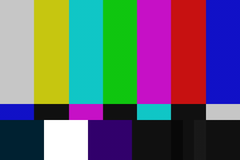
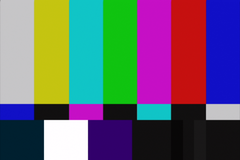
![EON GCHD Mk-II + Datel Wii HD Component Cable + [RetroRGB Comp2DVI v2.1]](/wiki/images/thumb/d/d4/GBI_AD9887A_GCHD_Mk-II_YUV.png/240px-GBI_AD9887A_GCHD_Mk-II_YUV.png)
![EON GCHD Mk-II + HD Retrovision Wii Component Cable + [RetroRGB Comp2DVI v2.1]](/wiki/images/thumb/5/5f/GBI_AD9887A_GCHD_Mk-II_YUV_%282%29.png/240px-GBI_AD9887A_GCHD_Mk-II_YUV_%282%29.png)
![EON GCHD Mk-II v2.4c.2 + Datel Wii HD Component Cable + [RetroRGB Comp2DVI v2.1]](/wiki/images/thumb/6/62/GBI_AD9887A_GCHD_Mk-II_v2.4c.2_YUV.png/240px-GBI_AD9887A_GCHD_Mk-II_v2.4c.2_YUV.png)
![EON GCHD Mk-II v2.4c.2 + HD Retrovision Wii Component Cable + [RetroRGB Comp2DVI v2.1]](/wiki/images/thumb/3/31/GBI_AD9887A_GCHD_Mk-II_v2.4c.2_YUV_%282%29.png/240px-GBI_AD9887A_GCHD_Mk-II_v2.4c.2_YUV_%282%29.png)
![Nintendo GameCube Component Video Cable + [RetroRGB Comp2DVI v2.1]](/wiki/images/thumb/1/1d/GBI_AD9887A_Component.png/240px-GBI_AD9887A_Component.png)
![GCVideo-DVI v2.4a and earlier [1][2]](/wiki/images/thumb/5/58/GBI_AD9887A_GCHD.png/240px-GBI_AD9887A_GCHD.png)
![GCVideo-DVI v2.4b and later [1]](/wiki/images/thumb/2/2f/GBI_AD9887A_GCHD_Mk-II.png/240px-GBI_AD9887A_GCHD_Mk-II.png)
![EON GCHD Mk-II v2.4c.2 + HDMI Cable [1]](/wiki/images/thumb/1/16/GBI_AD9887A_GCHD_Mk-II_v2.4c.2.png/240px-GBI_AD9887A_GCHD_Mk-II_v2.4c.2.png)
![Insurrection Industries CARBY v2.4d-2 [1]](/wiki/images/thumb/2/21/GBI_AD9887A_CARBY_v2.4d-2.png/240px-GBI_AD9887A_CARBY_v2.4d-2.png)

![EON GCHD Mk-II + Datel Wii HD Component Cable [1][2]](/wiki/images/thumb/c/c9/GBI_ADV7604_GCHD_Mk-II_YUV_1080i.png/240px-GBI_ADV7604_GCHD_Mk-II_YUV_1080i.png)
![EON GCHD Mk-II + HD Retrovision Wii Component Cable [1][2]](/wiki/images/thumb/c/c4/GBI_ADV7604_GCHD_Mk-II_YUV_1080i_%282%29.png/240px-GBI_ADV7604_GCHD_Mk-II_YUV_1080i_%282%29.png)
![EON GCHD Mk-II v2.4c.2 + Datel Wii HD Component Cable + [RetroRGB Comp2DVI v2.1] [1]](/wiki/images/thumb/c/cb/GBI_ADV7604_GCHD_Mk-II_v2.4c.2_YUV_1080i.png/240px-GBI_ADV7604_GCHD_Mk-II_v2.4c.2_YUV_1080i.png)
![EON GCHD Mk-II v2.4c.2 + HD Retrovision Wii Component Cable + [RetroRGB Comp2DVI v2.1] [1]](/wiki/images/thumb/b/bc/GBI_ADV7604_GCHD_Mk-II_v2.4c.2_YUV_1080i_%282%29.png/240px-GBI_ADV7604_GCHD_Mk-II_v2.4c.2_YUV_1080i_%282%29.png)
![Nintendo GameCube Component Video Cable + [RetroRGB Comp2DVI v2.1]](/wiki/images/thumb/5/50/GBI_ADV7604_Component_1080i.png/240px-GBI_ADV7604_Component_1080i.png)
![EON GCHD Mk-II + Datel Wii HD Component Cable [1][2]](/wiki/images/thumb/c/cc/GBI_AD9887A_GCHD_Mk-II_YUV_1080i.png/240px-GBI_AD9887A_GCHD_Mk-II_YUV_1080i.png)
![EON GCHD Mk-II + HD Retrovision Wii Component Cable [1][2]](/wiki/images/thumb/f/fa/GBI_AD9887A_GCHD_Mk-II_YUV_1080i_%282%29.png/240px-GBI_AD9887A_GCHD_Mk-II_YUV_1080i_%282%29.png)
![EON GCHD Mk-II v2.4c.2 + Datel Wii HD Component Cable + [RetroRGB Comp2DVI v2.1] [1]](/wiki/images/thumb/c/cf/GBI_AD9887A_GCHD_Mk-II_v2.4c.2_YUV_1080i.png/240px-GBI_AD9887A_GCHD_Mk-II_v2.4c.2_YUV_1080i.png)
![EON GCHD Mk-II v2.4c.2 + HD Retrovision Wii Component Cable + [RetroRGB Comp2DVI v2.1] [1]](/wiki/images/thumb/c/c7/GBI_AD9887A_GCHD_Mk-II_v2.4c.2_YUV_1080i_%282%29.png/240px-GBI_AD9887A_GCHD_Mk-II_v2.4c.2_YUV_1080i_%282%29.png)
![Nintendo GameCube Component Video Cable + [RetroRGB Comp2DVI v2.1]](/wiki/images/thumb/1/1f/GBI_AD9887A_Component_1080i.png/240px-GBI_AD9887A_Component_1080i.png)
![Insurrection Industries CARBY + Manhattan HDMI to VGA Converter [2][3][4]](/wiki/images/thumb/a/af/GBI_AD9887A_CARBY_VGA_1080i.png/240px-GBI_AD9887A_CARBY_VGA_1080i.png)
![Insurrection Industries CARBY v2.4c + Manhattan HDMI to VGA Converter [2][3]](/wiki/images/thumb/a/af/GBI_AD9887A_CARBY_v2.4c_VGA_1080i.png/240px-GBI_AD9887A_CARBY_v2.4c_VGA_1080i.png)
![EON GCHD Mk-II v2.4c.2 + Manhattan HDMI to VGA Converter [3]](/wiki/images/thumb/3/33/GBI_AD9887A_GCHD_Mk-II_v2.4c.2_VGA_1080i.png/240px-GBI_AD9887A_GCHD_Mk-II_v2.4c.2_VGA_1080i.png)
![Insurrection Industries CARBY v2.4d-2 + Manhattan HDMI to VGA Converter [3]](/wiki/images/thumb/6/6c/GBI_AD9887A_CARBY_v2.4d-2_VGA_1080i.png/240px-GBI_AD9887A_CARBY_v2.4d-2_VGA_1080i.png)

